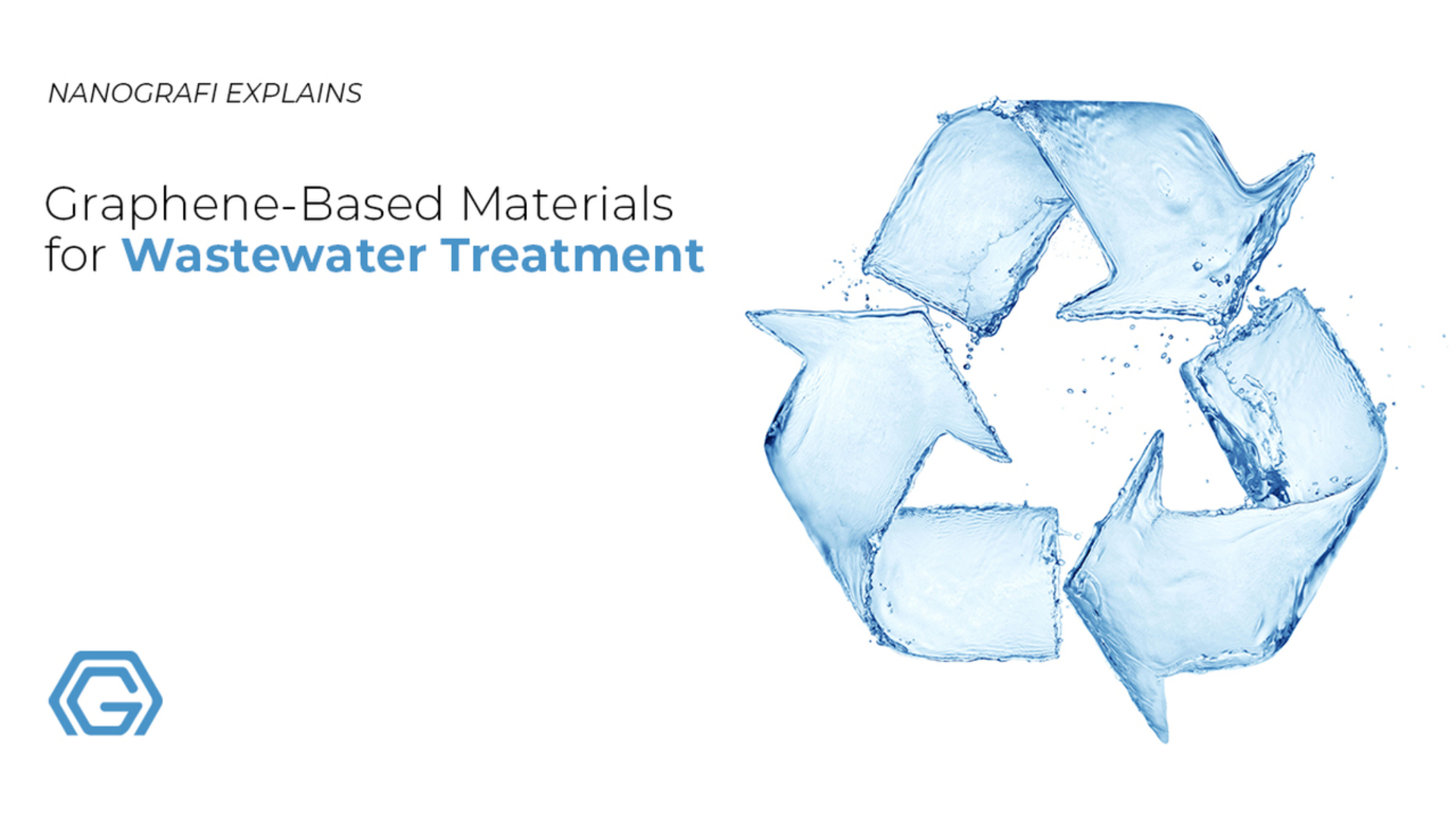Bulk Graphene Production from Waste Materials
Novel solutions to mass graphene production and waste management have recently emerged. Producing quality graphene products from harmful waste materials is an attractive solution to two of the most challenging problems.
To this purpose, three different sustainable and cost-effective routes have been suggested to convert carbon-rich waste materials to high quality graphene.
Introduction
The fast pace consumption of food products and petroleum based materials has raised a lot of sustainability concerns. More and more attention is paid to this problem and the urgency of the subject is non-ignorable. According to the Caucasus Environmental Non-Governmental Organization Network (CENN), 8.3 billion tons of plastic was produced between 1950 and 2015, where 6.3 billion tons of that plastic has already turned into waste.Only 9% of the plastic turned into waste has been recycled, while 12% is incinerated and 79% (4.9 billion tons) is either put in a landfill or dumped. On the other hand, 30-40% of food products are thrown out as waste. These materials combined make up for an alarming amount of waste dumped in nature. In the spirit of sustainability, recycling has become one of the hot topics of modern times. Due to the energy shortage and environmental pollution humankind faces today, recycling and repurposing of high volume trash to produce valuable materials are becoming more and more important each day. However, the lack of reasonable disposal methods and difficulty in degradation make it challenging to efficiently reuse rich-carbon materials such as various plastic wastes and convert them into treasure materials. To provide satisfying methods, scientists are working on different approaches. When it comes to carbon-rich waste materials, graphene is recently suggested as a valuable output from waste management processes. Considering the fame and attractiveness of graphene, producing graphene from a range of waste materials would be a groundbreaking innovation.
How to Produce Graphene Flakes from Trash?
Graphene has become a world-famous material. It is at the center of countless different studies and adds great value to any system it is introduced to. The special hexagonal arrangement of carbon atoms in graphene gives the material unique attractive properties such as high strength, excellent electrical and thermal conductivity, light weight, and chemical stability. The use of these properties is proven to be valuable in several different industries including construction, waste management, diagnostics, medical appliances, optics, energy storage, and many others. Despite the stellar record of exciting applications of graphene, very few graphene products have actually managed to appear on the market. This is due to the lack of proper graphene mass production methods. It is relatively easy to produce a small amount of this wonder material however it’s surprisingly difficult to produce amounts of graphene sheets for commercial use. Thus, the mass production of graphene has been an important research area since the discovery of this infinitesimally thin material. For example, graphene reinforced concrete could revolutionize the construction industry but simply there isn’t enough graphene with appropriate qualities in the market. Currently, graphene is produced through bottom-up or top-down approaches and in small quantities. Though unsuccessful, adjustments to the current production methods are considered to increase the graphene production volume. The traditional method of exfoliating graphene from bulk graphite with adhesive tape is commonly used for commercial graphene production. However, this method is not only expensive it is also inefficient and results in poor quality graphene. Similarly, chemical based exfoliation methods are also not favorable due to the excessive amount of solvent usage, environmental considerations, and poor quality graphene flakes. Even though gas phase chemical vapor deposition can result in good quality graphene this method is also found to be unqualified for mass production. This is why mass production of graphene from carbon based waste materials has sparked great excitement. There are some hopeful studies on this subject making it possible to obtain an environmentally friendly and sustainable graphene production method.
Different researches on graphene production from carbon rich waste materials follow three different routes. However, the feed material is the same for each process. Solid waste materials including food waste, polymer or plastic products, forest residues, municipal waste, and biological waste can be used to convert worthless carbon content into graphene foils or sheets. Considering that 30-40% of food is thrown out and plastic wastes are one of the main concerns of today’s world, these processes hold great importance.
One of the processes utilizing waste materials for graphene foil production focuses on solid state chemical vapor deposition (CVD). The growth process uses nickel foil as the catalyst and is carried under 1050°C. This method provides graphene foils with fewer defects than graphene flakes obtained by gas phase CVD processes. Furthermore, final graphene foils show better electrical conductivity of 3824 Scm-1.
To get more information about the utilizations of graphene,
you can read our blog post here.
One other possible process uses a two-step pyrolysis method to convert plastic waste into graphene nanosheets. The first step is performed under 400°C in presence of nanoclay and an inert nitrogen environment. Nanoclay is a well-known catalyst in graphene production with proven effects on obtaining high quality graphene nanoflakes. It is used as the degradation and transforming agent found cheaply and has almost zero toxic effect on both ecology and economy. The first step ensures the removal of all the oil containing hydrocarbons through slow rate pyrolysis reactions resulting in an amorphous charred residue. The second step is performed under 750°C and in an inert nitrogen environment. Under high temperature, the amorphous carbon material is converted into graphene nanosheets. This process requires the removal of used nanoclays with distilled water and mild acidic treatment.
Another recent study utilizing carbon based waste materials flash joule heating process. The source material is compressed inside a quartz or ceramic tube between two electrodes of conductory refractor material such as copper or graphite. Amorphous carbon mixture is exposed to temperatures higher than 2700°C. Such extreme temperature is reached in less than 100 ms by utilizing high voltage electric discharge. The resulting product is reported as turbostratic flash graphene. Unlike other graphene products with A-B stacking, the exfoliation of turbostratic graphene layers from the bulk is considerably easy to achieve. Turbostratic graphene separates into graphene layers easily in solution or upon blending in composites. All non-carbon elements such as oxygen and hydrogen are removed from the source material during the process as gas. This process presents a clean and cost effective graphene production method not only because it uses waste materials but also because there is no use of solvents. Especially this method has attracted the attention of investors and companies are working to commercialize this breakthrough technology. The economic and environmental benefits of this method are non-ignorable.
All of these methods are considered to be promising ways to turn trash into valuable graphene products and contribute to eco-industry and sustainability.
Conclusion
Mass production of graphene and ever increasing concerns on waste materials are challenging problems on their own. Developing innovative solutions that could take care of these two haunting subjects could be revolutionary. Recycling of waste materials is an important subject in the world. Fast pace consumption and the high volume of trash raises concerns about the future and needs innovative sustainable solutions. Everyday trash which is composed of food waste, plastic or polymer products, municipal and biological wastes mainly contain carbon in their structure. Utilizing this high volume of carbon content as the source of bulk graphene production is an exciting opportunity. Bulk production of graphene is a challenging subject due to the lack of proper graphene mass production methods. Current strategies result in a small volume of high quality graphene products which inhibits the use of the promised potential of graphene. Recently, promising methods are developed for environmentally friendly and bulk production of graphene. Three different routes using solid phase chemical vapor deposition, flash pyrolysis, and two-step pyrolysis processes have represented the possibility of graphene production from waste materials. All of these production routes are clean and cost effective alternatives for bulk graphene production. They have already attracted the attention of investors to commercialize these processes. Successful implementation of these processes could be a great step towards a zero-emission future and great improvements in material sciences.
To get more information, you can visit Blografi.
References
Luong, D. X., Bets, K. V., Algozeeb, W. A., Stanford, M. G., Kittrell, C., Chen, W., ... & Wang, Z. (2020). Gram-scale bottom-up flash graphene synthesis. Nature, 577(7792), 647-651.
Pandey, S., Karakoti, M., Dhali, S., Karki, N., SanthiBhushan, B., Tewari, C., ... & Sahoo, N. G. (2019). Bulk synthesis of graphene nanosheets from plastic waste: An invincible method of solid waste management for better tomorrow. Waste Management, 88, 48-55.
Cui, L., Wang, X., Chen, N., Ji, B., & Qu, L. (2017). Trash to treasure: converting plastic waste into a useful graphene foil. Nanoscale, 9(26), 9089-9094.
Service, R. F. (2020). Electricity turns garbage into high-quality graphene
Rice University. (2020, January 27). Lab turns trash into valuable graphene in a flash: 'Green' process promises pristine graphene in bulk using waste food, plastic and other materials. ScienceDaily. Retrieved November 13, 2020 from www.sciencedaily.com/releases/2020/01/200127134751.htm
The Amount of Plastic Waste Worldwide. (n.d.). Retrieved November 16, 2020, from
- http://environment.cenn.org/waste-management/publications/amount-plastic-waste-worldwide/
Recent Posts
-
Advanced Materials for Unmanned Aerial Vehicle (UAV) Protection Against Laser
Consider a UAV on a critical mission, rendered inoperative by a sudden laser attack. With the increa …26th Jul 2024 -
Simulation and Modeling of Material Properties
Our world is composed of a dazzling array of materials, each with its own unique properties that dic …19th Jul 2024 -
Advanced Coatings for Superior Corrosion and Wear Resistance
Corrosion and wear pose significant challenges across various industries, leading to substantial eco …12th Jul 2024







